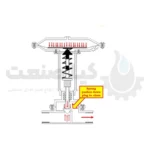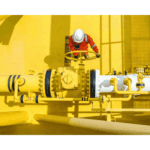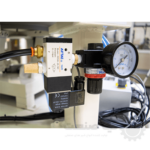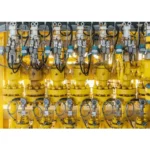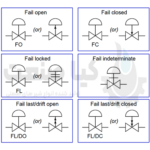An air compressor pressure relief valve is an important component in industrial air compressors designed to protect against overpressure.
This is a safety measure when the air pressure in the system exceeds the specified limit.
It opens automatically and allows excess air to escape, preventing possible damage to the equipment or the system itself.
This controlled release ensures that pressure remains within safe parameters.
What is the air compressor valve?
An air compressor relief valve works by releasing excess pressure from a compressed air system to prevent possible overpressure and equipment damage.
When the pressure in the system exceeds the valve’s preset set point, the relief valve opens and allows excess air to escape.
This controlled release reduces the risk of system failure and ensures that the pressure remains within a safe range.
After the pressure returns to the acceptable range, the drain valve closes and resumes its normal operation.
This mechanism protects the integrity of the compressed air system and its components, promoting safety and optimal performance.
How does the air compressor pressure relief valve work?
Before we talk about how the air compressor pressure relief valve works.
First we need to look at how the air pressure inside the compressor is managed when everything is working normally.
Under normal conditions, the air pressure in a compressor is controlled by a pressure switch in an electrical/mechanical control system or, in the case of an electronic controller, a pressure transducer and controller settings.
When the set cut-off pressure for the pressure switch is reached, the compressor stops compressing air (unloading).
until the set pressure is cut off, at which point it starts compressing the air (load) again.
If the pressure switch fails, the compressor cannot start compressing air again, or potentially worse, it cannot stop.
Most compressors also have a high pressure safety switch that stops the compressor if the pressure exceeds the unload set point.
If any of these parts fail with the operation of the compressor.
A pressure relief valve is a simple safety backup for pressure switches and high pressure switches or controller set points.
The safety valve above the high pressure safety switch is generally set at or below the vessel’s maximum operating pressure.
There is a spring inside the valve and the pressure created by the tension of the spring causes the valve to close under normal working conditions.
However, as air pressure increases in pressurized vessels (such as a storage tank), it will eventually exceed the rated pressure of the relief valve.
and causes the relief valve to open and the excess pressure to be transferred to the atmosphere.

What happens if an air compressor relief valve fails?
What happens when a relief valve fails depends on whether it fails with the valve open or closed.
Malfunction with the valve open
If the pressure relief valve is not opened, the air is continuously vented to the atmosphere.
and prevents the air flow from being fully pressurized.
Before restarting, the compressor must be shut down and the auxiliary valve replaced.
An open drain valve is likely to lose production as a result of high-pressure airflow with flying debris and an unsafe sound level. and creates potential hazards for personnel.
Malfunction with the valve closed
Failure to close the pressure relief valve indicates a potentially more dangerous situation.
As mentioned earlier, there is a relief valve to allow.
Excess pressure should be removed so that the air pressure in the compressor pressure tanks does not exceed their nominal specifications.
If the valve is not closed, this pressure ventilation cannot occur.
Unless the compressed air demand matches the compressed air supply, the pressure inside the compressor will continue to increase.
Ultimately, the pressure build-up will rupture the storage tank, damage the compressor, and possibly cause further damage and injury to nearby property and people.
Air compressor pressure relief valve maintenance tips
Air compressor pressure relief valve maintenance is important to ensure safe and efficient system operation.
Here are some maintenance tips for the air compressor pressure relief valve:
Regular inspection: Perform regular visual inspections of the air compressor relief valve to check for any signs of damage, corrosion, or wear.
Make sure the valves are free of debris and any obstructions that may prevent them from functioning properly.
Valve Testing: Regularly test air compressor pressure relief valves to verify that they open and close as designed.
Follow the manufacturer’s recommendations for test frequency and methods.
This helps identify any potential problems before they become critical.
Verify pressure setting:
Periodically check that the pressure settings on the pressure relief valves match the specifications provided by the manufacturer.
Incorrect pressure settings can compromise the safety of the entire system.
Cleanliness: Keep the environment around the pressure relief valves clean to prevent the entry of dust, dirt or debris.
and affect their performance. To ensure optimal performance, clean valves and the area around them regularly.
Maintenance Documentation: Document all maintenance activities performed on the air pressure relief valves.
If necessary, replace the air compressor pressure relief valve:
Replace safety valves promptly if any signs of wear, damage or defects are observed during inspection or testing.
A delay in replacement can jeopardize the overall safety and longevity of the air compressor system.
Follow the manufacturer’s instructions: Follow the manufacturer’s instructions and recommendations for maintenance, inspection and testing.
Different types of pressure relief valves may have specific requirements.
Therefore, it is essential to follow the instructions provided by the valve manufacturer.
Expert personnel: Ensure that personnel responsible for the maintenance and repair of air compressor pressure relief valves are adequately trained in safety valve procedures.
Training should cover proper inspection techniques, testing procedures and adherence to safety protocols.
Consult the experts: If there are any doubts or specific problems, consult the experts or the manufacturer for guidance.
Using a professional consultation will ensure that maintenance is carried out correctly and any potential problems are dealt with quickly.
Learn emergency shutdown methods:
Familiarize personnel with emergency shutdown methods in case of need to activate pressure relief valves.
Proper training in emergency response enhances overall safety measures.
By consistently following these maintenance tips, you can ensure that your air compressor relief valves operate effectively.
and contribute to a safe and reliable compressed air system.
Regular inspections, testing the air compressor, and following the manufacturer’s instructions are key components of a comprehensive maintenance strategy.
Kiasanat is a supplier of all types of pressure relief valves, safety valves, relief valves, such as Samson pressure relief valves, Yoshitake pressure relief valves, Spirax Sarco pressure relief valves, Isfahan steam water pressure relief valves, Yoshitaki pressure relief valves, Honeywell pressure relief valves, Samyang pressure relief valve, Veen pressure relief valve, Leser safety valve, Spirax Sarco safety valve, etc.


